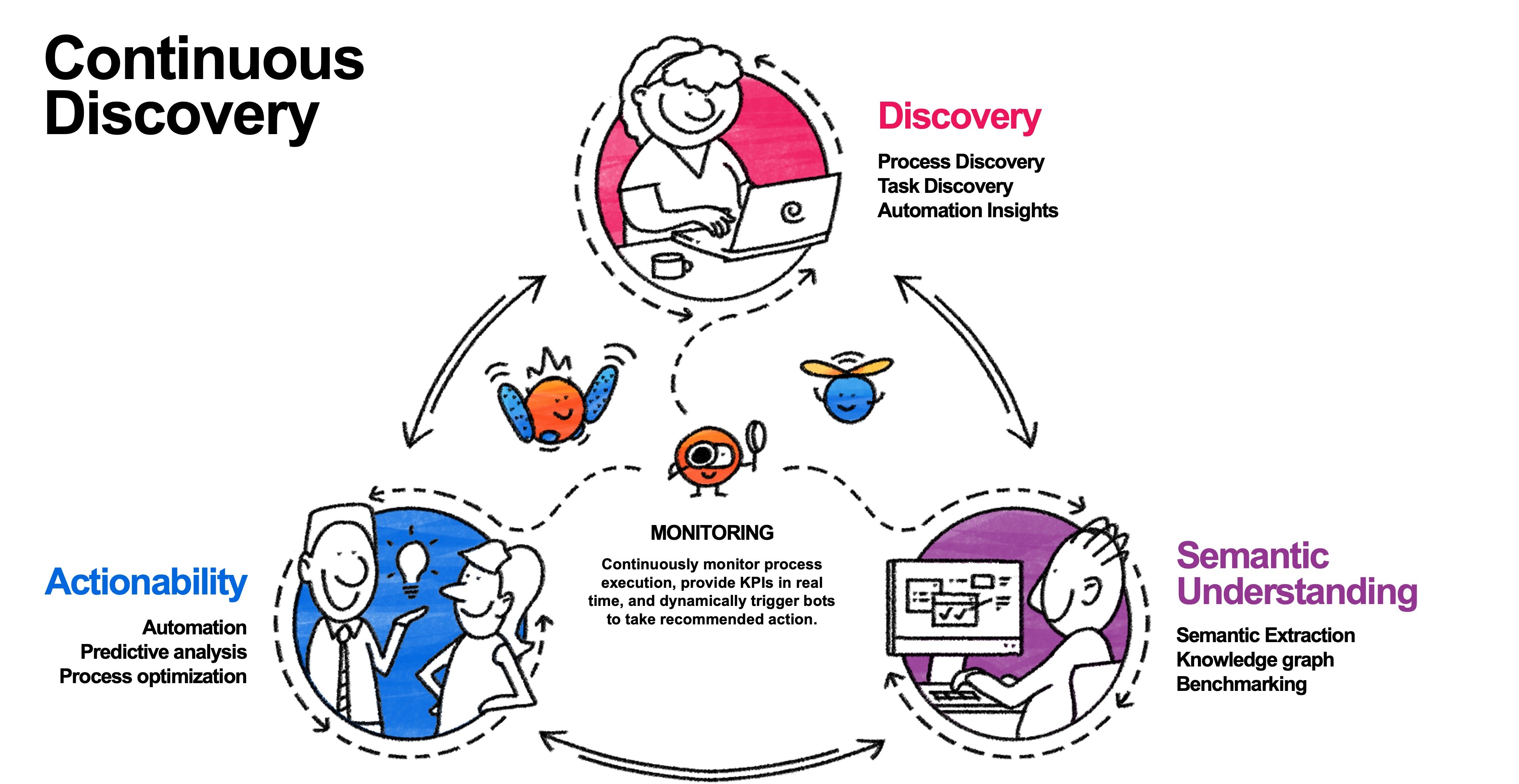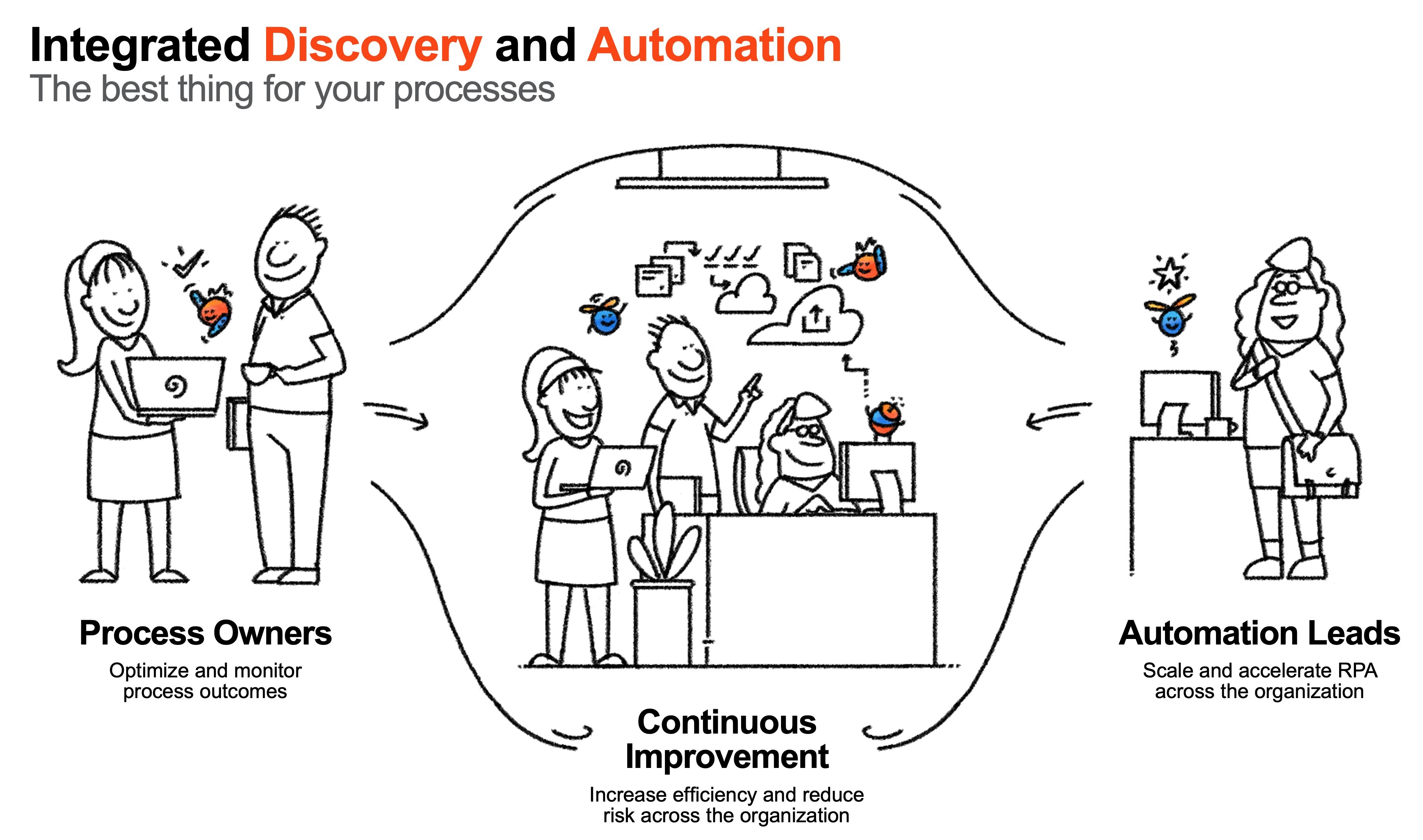The Future of Process Discovery: Why Continuous Discovery is the Way Forward

That business resilience is a competitive advantage isn’t new information. But fewer business leaders understand that maintaining business resilience requires a constant focus on business outcomes and evolving business processes. Process improvement practices and automation technologies play a key role in maintaining resilience and achieving business outcomes, particularly when navigating changing conditions.
But, until today, only a few organizations have achieved tangible results and outcomes. UiPath has seen this firsthand from the client organizations we have worked with.
Those organizations that have begun using automation for completing part of a process are better off but they’re also struggling to achieve greater efficiency gains. Realizing the full value of automation requires expanding your program to more departmental processes (which automation leads do not control). And getting full visibility on a process calls for the use of process improvement techniques.
When it comes to process transformation, most organizations have been more aspirational. Why? Historically, process improvement projects involved siloed approaches, significant manual effort in preparing data, and subjective views. Typically, process improvement projects included staff interviews and shadowing, followed by detailed reports that were often out of date by the time the reports were finalized.
When meeting client needs the answer to “what should we optimize?” can’t wait for antiquated ways of business process optimization. And a modern enterprise cannot afford the errors that come with manual processes and outdated tools. The primary goal for each organization is to meet the needs of its customers, and this must be achieved via the most efficient path. We’re noticing that organizations who succeed in implementing process transformation programs with impact are leveraging what we call Continuous Discovery.
With advancements in robotic process automation (RPA), artificial intelligence (AI), machine learning (ML), and other automation technologies, a new world is possible for process transformation. One where every business is enabled to quickly adopt those technologies and, as a result, can better achieve business outcomes like resilience and operational efficiency. It’s a new world where tools shed light on necessary operational aspects in a scientific way. And truly enable businesses to access (and harness) real-time, continuous insights. This is what Continuous Discovery is all about. And in this blog post we’re sharing the steps needed to embrace it and realize value in your organization.
What is Continuous Discovery?
Continuous Discovery enables organizations to meet the targeted process and business key performance indicators (KPIs). Discovery and automation technologies are used to discover, understand, and take action towards the desired KPIs. Meanwhile, these same technologies allow for the continuous monitoring of overall organizational performance and process transformation initiatives to ensure processes are kept at their most optimized state.

Why is Continuous Discovery important?
Consider the current method of work at most companies today. Employees at every level spend more time on tools, systems, and applications than ever before. Most of their time is focused on executing tasks by doing the necessary steps to expedite completion (assuming actions are on the process ‘happy path’). Even if there is a prescribed procedure to follow, new conditions arise that keep adding steps to processes.
By comparison, directors and subject matter experts spend only a fraction of their time on process improvements and optimization.
But could things be done differently? Are there ways to bring more efficiency and value to the organization?
The only way to answer these questions is by having a constant finger on every process touchpoint. Continuous Discovery calls for—and enables—strict prioritization and scientific optimization of processes. This is key to building organizational resiliency, enabling you to make changes, discover new improvements, and monitor impact while transforming your processes.
The difference between world-class organizations and the rest is the degree to which they embrace automation and practice concepts such as Continuous Discovery.
This is especially true for those companies with goals of becoming a fully automated enterprise™.
Automation is central to any operating model of choice. To drive impactful automation programs an organization must find process improvement opportunities and select those that have the highest ROI.
With Continuous Discovery, automation champions and business leads can come together and approach digital transformation holistically. A holistic approach includes thinking about their business, their processes, and where automation fits, delivering business outcomes to C-suite on a sustained basis.

How does Continuous Discovery work?
Continuous Discovery works by leveraging digital footprints from structured and unstructured data sources in business applications combined with the way tasks are performed on people’s desktops. It’s those insights (plus crowdsourced input from employees) that tell an overall story about how work gets done and how it can be optimized.
Continuous Discovery involves using automated tools and AI to uncover existing process workflows. It gives decision makers a validated, data-driven basis for process improvement, for evaluating their automation priorities, and for taking action toward their desired business outcomes. It enables organizations to:
Identify the as-is state of business processes holistically
Identifying the as-is state includes mapping the end-to-end process (however complex) while ensuring analysis across multiple dimensions including by system, department, client, or by user.
Constantly understand how business KPIs are affected
Through Continuous Discovery, decision makers know:
The state of a business process at any given time
How the process could be improved
Where automation can have the highest impact
How to keep organizational processes in their most optimized state
Actively apply process optimization actions
Practicing Continuous Discovery allows organizations to re-engineer processes based on scientific data and methods for improving people, processes, and technology. This can range from simple alerts of exceptions or reminders, to promoting defined steps as automations that leverage RPA robots to optimize KPIs.
Monitor and keep processes in most optimized state
Finally, Continuous Discovery enables organizations to constantly monitor end-to-end processes to gather real-time insight into the processes’ evolved states and their changing context to feed the next decision.
We believe there is no limit to data analysis if you are dedicated to finding the truth and making it work for business growth. For each Continuous Discovery phase (phases are pictured in the graphic earlier in this blog post), the UiPath Platform offers a suite of discovery and automation technologies:
UiPath Process Mining and UiPath Task Mining are ideal tools to help in the discovery phase of a process lifecycle. Together with the crowdsourced ideas in UiPath Automation Hub, these tools enable you to scientifically discover the as-is state, including all the variations to the ‘happy path.’
Advanced AI and ML capabilities available throughout the UiPath Platform help you see process deviations and task workflows, benchmark, and know which process transformation scenarios have the highest ROI.
As process transformation opportunities are analyzed they need to be collected, evaluated, and acted upon. Automation Hub consolidates transformation recommendations from the Process Mining and Task Mining tools (and your employees’ automation ideas), providing a centralized place to collect and prioritize which ideas are most impactful.
Repeat the cycle of discovery to monitor and maintain process improvements or find new ways to optimize again. Further optimize your business outcomes by expanding Process Mining and Task Mining across even more organizational processes or other parts of the business.
Our goal for this blog post is to help more business leaders understand what it takes for a successful transformation program and the value to be realized by leveraging Continuous Discovery.
Will you be joining us at FORWARD 5? Don't miss our session, "Bridge Divide of Strategy, Automation and Process Optimization with Continuous Discovery," in the Keynote Theater on Wednesday (September 28) afternoon.
We also invite you to give us your Process Mining feedback in person during our Process Mining Focus Group at the conference. You can find information about the session and focus group on the FORWARD 5 agenda.
In the next Continuous Discovery blog post, we’ll explore how the UiPath Platform empowers organizations to bridge the divide between strategy, automation, and execution in every line-of-business process.

Product Marketing Manager, UiPath
Get articles from automation experts in your inbox
SubscribeGet articles from automation experts in your inbox
Sign up today and we'll email you the newest articles every week.
Thank you for subscribing!
Thank you for subscribing! Each week, we'll send the best automation blog posts straight to your inbox.



